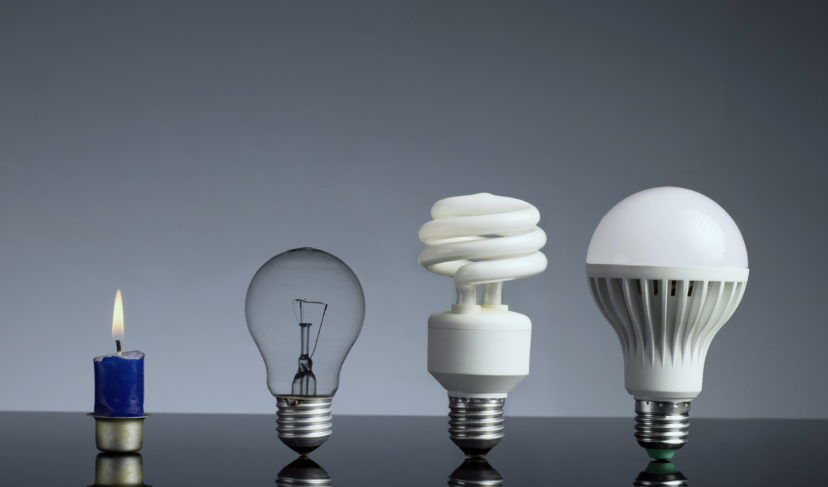Digital Accessibility for Migraine Sufferers
How to minimize potential triggers while using technology

Imagine this: You’re at your desk on your computer in the middle of the work day and need to go online to do some research. You click on a relevant search result and are met by a flashy site filled with ads, motion graphics, and a video that starts playing on it’s own. It catches you off guard and overloads your visual cortex, and before you know it your vision starts to distort, flare, or leave partially. You recognize the telltale aura signs and know now that you have a very limited window to find a dark room before the pain sets in. For myself and the one billion other people in the world who suffer from migraines this is a situation we know all too well.
What is a migraine?

So now I want to spend a little time talking more about migraines as many of you are probably thinking “Isn’t that just a bad headache?” Prior to experiencing them first hand, I’ll admit that that was my take on them. Misconceptions surrounding migraines are everywhere, and most people have a misunderstanding about what one actually entails. With that being said, I’m not a medical professional – so here is a brief overview from the Mayo Clinic.
“A migraine is a headache that can cause severe throbbing pain or a pulsing sensation, usually on one side of the head. It’s often accompanied by nausea, vomiting, and extreme sensitivity to light and sound. Migraine attacks can last for hours to days, and the pain can be so severe that it interferes with your daily activities.
For some people, a warning symptom known as an aura occurs before or with the headache. An aura can include visual disturbances, such as flashes of light or blind spots, or other disturbances, such as tingling on one side of the face or in an arm or leg and difficulty speaking.”
Migraine – Mayo Clinic
As you can see, a migraine is not your everyday average headache. That being said, migraines are unique to the patient and some may not experience all of these symptoms, and respond differently to different treatments. Migraines today are still not exceptionally well understood even in the medical community, but recent breakthroughs have led to the development of better drugs and treatment plans.
Identifying potential technological triggers
Now that we have a better understanding of what exactly a migraine is, I’d like to spend some time talking about triggers. Just as unique as the symptoms a migraine sufferer may experience from attack to attack, so are the triggers or causes. Some may be physiological changes or mechanical damage to the body while other triggers can be external or environmental – and those are the ones I would like to address today – specifically those brought on by the technology we rely on to communicate, create, and do business with today.
Please be advised that this list is not exhaustive and a myriad of other technological triggers exist out there.
Mitigating internal device triggers
We have identified a few of the most common triggers when interacting with technology, but what can we do to mitigate the impact other than abandon technology and stay in our dark, soundproofed rooms? Good news! There are quite a few ways to combat these triggers, internal and external to our devices. Here’s what you can do on your devices that could help.
- Adjust your display settings: All of the major computer operating systems have built in features to adjust your display, and most external displays have options to do it in their menus. Try lowering the screen brightness and adjusting contrast to a level that feels more comfortable for you. You can also reduce motion in the operating system and eliminate window transparency to keep things a bit more static on the screen. Changing your resolution settings to minimize eye strain may be helpful as well.
- Lower the volume: Many of us keep the volume on our devices all the way up, which makes notifications or unexpected interruptions much more jarring. Unless you know you need audio, keep your volume low to lessen the impact of notifications or pesky auto-playing content.
- Software: There are thousands of browser extensions that can minimize auto playing content or visually intensive web pages, thus limiting your exposure to potential triggers. This however is not a suitable alternative to having a fully accessible website however (Looking at you developers!).
- Usage Tracking: Most major operating systems now also feature screen time monitoring. You can use these features to get an idea of how much screen time is too much screen time, and set windows of time where certain apps can’t be used.
Mitigating external device triggers
Next on our list is external ways to minimize our triggers, be it behavioral or with the use of assistive technologies. There are some now that are commonly known, but I recently had the pleasure of attending the A11yPrinceton “Migraines and Digital Accessibility” meet-up, where John Jameson, the Digital Accessibility Developer at Princeton gave a wonderful talk about migraines and shared some great some great personal experiences and resources with the group, some of which i’ll be sharing in this article, in no particular order.
Some of these strategies, like adjusting your work environment or using assistive technologies, might require open communication with your employer about accommodations. These conversations are essential for creating a workplace that supports your well-being and productivity. By investing in accommodations, employers can reap significant benefits, such as increased employee satisfaction, improved productivity, and reduced turnover.
- Filters: Studies have shown that filtering light can have a positive effect on reducing strain. These include blue light filters for your display, or blue light glasses for your face. Blue light glasses have become fairly common and can often be found at your average department store, have been adopted by many of the designer eyeglass brands, and many companies even offer them in prescription lenses now as well. There are also rose filtered lenses available on the market that also help with eye strain, and new research into green light filtering lenses shows promise.
- Nerve Stimulation: One item I’m seeing more frequently is a forehead worn nerve stimulation device. These devices use electrical pulses to stimulate the trigeminal nerve in the forehead to reduce the occurrence and intensity of migraine attacks.
- Ergonomics: Ergonomics can play a large role in the onset of a migraine, especially for someone like me, who started suffering from migraines due to mechanical damage in the cervical spine. Using a standing desk, a well designed chair, and keeping your monitors at eye level are all great ways to combat this, but maintaining correct posture when using these tools is also an important behavioral change one should strive to make. I once had a computer teacher in high school drone on and on about posture, and I only wish I’d have listened to her then.
- Take a break: Get up and walk around the room! Not only will you be giving your eyes a rest, your body will be appreciative of the movement. That being said, we don’t always have the luxury to get up and walk away from our work but there are other alternatives. One such alternative is the 20-20-20 rule, where for every 20 minutes of screen time, you stare at an object 20 feet away for 20 seconds. Studies have shown that this can reduce the strain on your eye muscles.
Once again, this list of suggestions is not comprehensive, and I’d encourage you to reach out with any personal experiences or tools that you find useful.
Empowering those dealing with migraines
Migraines may seem insurmountable, but they don’t have to define your life. Start by exploring accommodations you can implement yourself such as posture adjustments, system tweaks, or practicing stress management techniques to find relief. Once you’ve identified your needs, consider discussing them with your employer. It is crucial to have open conversations with your employer about accommodations that can create a work environment that supports your well-being and productivity.
These conversations should be built into the hiring and onboarding process, so that accommodations are seen as a natural part of the employee experience. Remember, accommodations aren’t just about making things easier; they’re about empowering you to do your best work. When you feel supported and valued, you can be more engaged, productive, and satisfied in your role.
Accessible web design plays a vital role in creating a more inclusive digital world. Designers and creators should consider migraine triggers and ensure their designs are accessible for everyone. By prioritizing accessibility, we can make the online environment more welcoming and supportive for all.
___
Colin Masuhr is a seasoned IT professional with a strong background in systems administration, training, and cloud technologies. With certifications including VCP and CPACC, Collin brings a deep understanding of accessibility and virtualization to his current role supporting Tamman’s Information Technology and Marketing team





